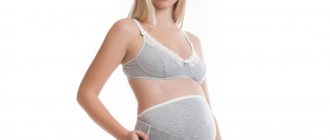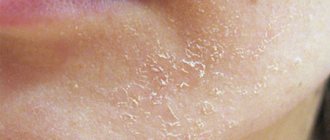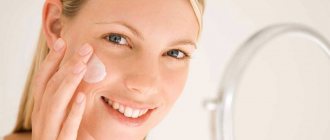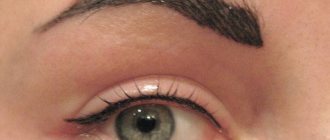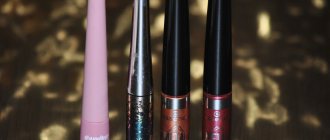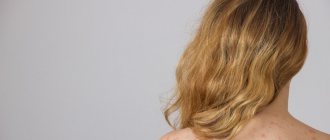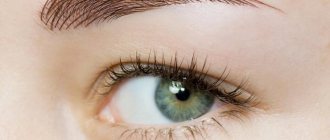A little history
The prototype of concealer, or color corrector, was first introduced in 1928, when one of the best students at New York College, Lydia O'Leary, decided that she needed to hide a red mole that was disfiguring her attractive features. This is how the first concealer was invented, called Covermark. It was this product that became the ideological basis for the entire line of foundation and concealer products.
Later, in 1942, Helena Rubinstein expanded the palette of concealer shades, which would make it easy to hide even the consequences of severe burns and injuries.
The final version of the product was introduced to the cosmetic market by Max Factor in 1954. All Hollywood stars used his product.
What is concealer used for?
Like any cosmetic product, the purpose of concealer is to conceal and highlight. However, in this case we are not talking about masking the relief or imperfections of the skin, and not about changing the contour of the face, but about color. Which, you see, is also very important. Apply concealer to the skin before foundation.
When advertising concealers, the main emphasis is on concealing dark circles under the eyes. However, the scope of application of this tool is much wider.
With concealer you can:
- hide redness and age spots;
- visually remove small wrinkles;
- hide enlarged pores;
- make the surface of the face smooth;
- disguise spider veins.
For a step-by-step guide to using concealer to cover under-eye circles, check out HERE
Green face corrector. Green concealer
Ideal appearance is the criterion that every girl strives for. Unfortunately, in the whole world you cannot find a person who has completely perfect skin. Today, manufacturing companies of various cosmetic products are trying in every possible way to make life easier for the fair sex by releasing new products that help disguise imperfections on the skin. Correctors, highlighters, concealers - all these products are designed to disguise defects in the skin of the face.
It has become commonplace that such products usually have a neutral range of shades, which are as close as possible to natural tones. However, what a surprise it was to notice on store shelves a concealer that was not the usual beige color, but green. Why is such a seemingly unusual cosmetic product necessary, how to use it correctly, how to choose it - we’ll try to figure it out.
Peculiarities
From English, the word “conceal” is literally translated as “to hide”, “to mask”. Accordingly, a concealer is a cosmetic product whose main functional purpose is to hide various blemishes on the skin of the face. So, according to the recommendations of experts, concealer can be used to disguise:
- various redness and rashes (acne);
- a network of capillaries located close to the upper layer of the epidermis;
- freckles and age spots;
- abrasions;
- fine wrinkles and crow's feet near the eyes;
- uneven tan;
- traces of insect bites;
- “bruises” and “bags” under the eyes.
Many girls are alarmed by the color of the concealer, so they try to avoid it, or replace it and choose the best option, in their opinion, for example, pink, purple, but this action, as a rule, does not bring a positive result. Let's remember what the spectral color wheel looks like. Opposite red is green, which means that shades of green can neutralize red. Accordingly, if there is any redness on the face, it can be easily removed with the help of a green concealer. Today, manufacturers of modern cosmetics produce concealers in different shades: rich green, mint, olive, marsh and others. This color scheme was developed for a reason, but in accordance with the color types of appearance of the fair sex.
How to use it correctly?
You need to know how to use any cosmetic product. Here's what makeup stylists say about how to use concealer correctly:
- when choosing a concealer, be sure to take into account your skin type (for example, for oily skin it is better to give preference to a product with a mattifying effect, but dry skin types will need a product with additional moisturizing);
- for problematic and rash-prone skin, concealers with antibacterial action have been created, which not only mask pimples, but also dry them out (it is recommended to pre-cleanse the skin with scrubs);
- concealer is applied exclusively to problem areas, it is not used as a base for makeup;
- blend the product with warm fingers; under the influence of the warmth of your hands, the product lies smoothly and unnoticeably.
It is impossible to make concealer at home, so experts do not recommend experimenting with your own skin.
How to apply?
When applying concealer, you must adhere to a number of recommendations so as not to be disappointed with the result. So, the steps for applying concealer to your face are:
- First you need to thoroughly cleanse your facial skin. The next step is to apply a moisturizing or nourishing cream; you can also use a makeup base/primer. Concealer applies much easier to well-moisturized skin. If you have small facial wrinkles, first use a cream with a toning effect. If you neglect this advice, the effect of using concealer will be completely opposite - wrinkles will be more noticeable.
- Using a special brush, apply a small amount of product dotted or streaked onto problem areas.
- Lightly tap with your fingertips and blend the concealer around areas of redness.
- The final stage is applying foundation or powder. Under no circumstances do it the other way around. If you first use foundation and apply concealer on top, your entire face will become covered with greenish spots.
Concealer color palette
Typically, the word “concealer” means a concealer of a shade close to flesh-colored. However, there is also such a rare class of make-up products as colored concealers. They are designed to disguise certain color imperfections of the skin.
Of course, you can even out your skin tone using a regular beige concealer in combination with foundation, but they are often not enough when working with skin imperfections of different shades.
In order not to apply an impressive layer of cosmetics on your face, consisting of foundation, concealer and powder, you should use colored concealers. This will help you get by with fewer products overall (but in itself, of course, does not negate the use of tone, beige concealer and setting powder - it will just be enough to apply each of these products in a thinner layer).
In the cosmetics department, the palette of concealers is quite diverse. Before choosing the right concealer, you need to decide what the main skin imperfections will need to be hidden with it. It is very important to choose the right tone, since otherwise you can only emphasize defects and not hide them.
Each skin imperfection has its own color: acne and post-acne – red; moles - brown; age spots – yellow; freckles - reddish. To disguise such defects, you need to use a concealer of the opposite color. It is determined by a special color wheel.
Colors that are opposite each other make up a pair that neutralizes each other. Using this trick, you can easily choose the right concealer. It should be selected in accordance with the color of the skin imperfection that needs to be hidden.
Lavender
Lavender shade and all shades of lilac concealer eliminate yellow-colored imperfections and also correct dullness of the face. Lavender concealer helps correct tired looking skin.
All you have to do is mix it with your foundation and apply along your cheekbones and forehead, then blend thoroughly. A purple concealer will give your face freshness and hide acne. The specific choice of concealer color depends on your skin color type.
Green
This shade of concealer is the most popular because it masks redness, vascular network, acne and irritation on the skin.
That is, those imperfections in complexion that occur most often.
Yellow
Yellowish shades of concealers are suitable for those who want to disguise dark circles under the eyes that have a blue-violet color. That is, such circles that appear from chronic lack of sleep or overwork. In addition, yellow concealer can remove the reddish tint of the face and disguise almost any skin imperfections. After application, the skin will become smoother and its tone will significantly improve, especially if it has a grayish tint.
Orange
This concealer color is also ideal for covering up bruises, but in a blue-green color. This product perfectly hides veins protruding in the eye area. This shade looks good on dark skin, as after application it acquires a warmer tone, becomes smoother and brighter, and looks more natural.
Orange color will help hide even tattoos.
Pink
This shade of concealer is perfect for disguising greenish circles under the eyes.
It comes in a variety of shades from coral to peach. For pale skin, salmon shade is preferable. Peach is suitable for skin with olive undertones. This product can also be used as a highlighter when applied along the cheekbones and other highlight areas.
Violet
The purple shade of the concealer will help get rid of the yellowish tone of the face and pigmentation, hide post-acne and give the face freshness.
White
This concealer color is used to soften the colors of the others and is applied last. They can also highlight, for example, the cheekbones or the center of the nose, which will give a visually more beautiful shape to the face.
Shades of correctors and primers, and their purpose
Green corrector
Since green is opposite red on the color wheel, it is green-colored correctors that are suitable for hiding redness from pimples, acne, broken blood vessels, and other things.
For the best effect when masking rashes, apply the green corrector with a small brush exactly to the area of redness, let it “sit” and apply a light concealer on top that matches your skin tone.
If you need to even out the redness of a larger area of skin, for example, the nose area, then it is better to apply the green corrector with a damp beauty sponge, and on top, be sure to even out the tone of your face with a light foundation of your skin tone.
Well, if you have redness almost all over your face (as a result of a burn, hormonal imbalances, etc.), then you are better off using a green-colored face primer, which lays down in a much thinner layer than cream correctors and will not create a mask effect on your face. And don’t forget that you should also apply a light foundation in your skin tone over the primer.
What to buy: Becca Backlight Targeted Color Corrector in Pistachio, NYX Studio Perfect Primer 02 Green, Pür Cosmetics Color Correcting Primer - Redness Reducer - Green
Pink/salmon concealer
Pink/salmon shade of correctors perfectly hides dark circles under the eyes of fair-skinned girls. The advantage of the pink shade is that it practically blends with the natural skin tone, so you often don’t even need to apply a concealer that matches your skin tone over it. The main thing here is to make sure that after the corrector your complexion is uniform and nothing looks like a foreign spot.
In addition, pink correctors brighten the area around the eyes, making the look more open.
Also, pink correctors are good at hiding brown spots on fair skin, which can be caused by age-related changes or hyperpigmentation of the skin.
It is better to apply the pink/salmon corrector with your fingers so that it lays down in as thin a layer as possible.
What to buy: Make Up For Ever Step 1 Skin Equalizer #6 Cool Pink, Benefit Erase Paste Brightening Camouflage for Eyes & Face concealer
Peach corrector
Peach shades of correctors are great for hiding circles under the eyes of those with dark or tanned skin. Typically, girls with darker skin have circles under their eyes that are not blue or violet (like those with fair skin), but have a greenish tint. Since the opposite shade of green is peach, it is the color that best hides such circles under the eyes.
It is also better to apply this corrector with your fingers, so that the product melts from the warmth of the skin and spreads lightly onto the skin under the eyes in a thin layer. It is better to apply a light concealer over the peach shade to make the complexion uniform.
What to buy : Make Up For Ever Step 1 Skin Equalizer #8 Peach
Yellow corrector
Yellow corrector is opposite the blue shade on the color wheel, so it is also good for covering up under-eye circles, pimple marks or bruises in blue/purple shades. Since light-skinned people tend to have blue circles under their eyes, it is better for girls with fair skin to choose yellow correctors. Since blue skin tones can be corrected with pink concealers, it may take time to find the shade that works best on your skin tone.
The yellow shade can also be used by dark-skinned girls - a yellow primer applied under the foundation will make the complexion warmer.
Sometimes yellow correctors are also used to neutralize the red tone of the face - then the complexion will look more natural and there will be some blush left on it, which cannot be achieved when using green primers, which completely eliminate even a hint of redness.
What to buy: NYX Concealer Wand in 10 Yellow, Clinique SuperPrimer Color Corrects in Yellow
Orange/red corrector
Orange/red concealer is used to neutralize very dark circles under the eyes on girls with very dark or dark skin. The orange-red corrector warms up violet-blue tones and helps make them less noticeable. It is advisable to apply them with a damp beauty sponge to achieve maximum blending. On top of such a corrector, be sure to apply a concealer that matches your skin color, otherwise you risk walking around with red circles under your eyes.
What to buy: IsaDora Color Correcting Concealer in 32 Neutral, Becca Backlight Targeted Color Corrector in Peach, Clinique SuperPrimer Color Corrects in Carol
Blue/lilac corrector
Blue/lilac correctors are designed to brighten a dull complexion.
In order to highlight the entire face, it is better to use primers that have a lighter texture and which are good for foundation.
Also, due to the fact that blue is opposite yellow on the color wheel, blue/lilac correctors will help even out your complexion if you overdo it with self-tanning. Again, for this it is better to use primers that can be applied to the entire face. If the self-tanning is patchy, then the borders of the spots can be masked with denser blue/lilac shades of correctors.
What to buy: NYX Concealer Wand in 11 Lavender, Clinique SuperPrimer Color Corrects in Purple, Make Up For Ever Step 1 Skin Equalizer #7 Blue
Rules for applying colored concealers
The first and most important rule for applying any decorative cosmetics is to prepare your facial skin. This means that the skin needs to be cleansed and moisturized. And only then start with makeup.
As a rule, colored concealer is applied after foundation, carefully blending it along the edges of the application area. After the product “sits” on the face (usually this takes a couple of minutes), a beige concealer that matches the skin tone is applied on top of it.
If you do not plan to use a beige concealer, but want to slightly correct imperfections with colored ones, you should apply them with a pre-foundation base directly on the base or moisturizer. When applying foundation after this, do not shade it with “rubbing” movements - this way you will shift the shades of the concealers and mix them together. It’s better to use a sponge - use it to carefully apply the foundation onto your face using “pressing” movements.
If a concealer with reflective particles is used, then in this case it is applied after the foundation.
Under the skin around the eyes, the product is applied pointwise from the inner corner of the eye to the outer corner. Then the corrector must be distributed evenly and a little powder applied.
For skin with wrinkles, a cream texture concealer is not always suitable; it can emphasize wrinkles. In this case, it is better to use a liquid product, which is carefully applied with a brush. After that, the concealer should dry, after which it can be shaded.
Liquid concealer will ideally correct sunken skin irregularities. To do this, use a thin brush to fill uneven areas with corrector. However, they cannot be distributed. Finally, the foundation is applied.
Yellow and green concealer is applied before foundation or foundation. But if the skin tone is similar to the foundation, the order of application does not matter.
How to use concealer
A cleansed and moisturized face is the basis of any makeup. Before using correctors, you need to wash your face with your usual product, apply day cream and let it absorb for about 15 minutes.
The next step is to apply a green face concealer to the base, only on the areas that need concealment. A synthetic foundation brush or applicator in the case of a liquid product is suitable for this, and problem areas are painted over with a pencil.
Then the product is shaded with your fingertips, but under no circumstances rubbed into the skin. There is no need to “overdo it” with the corrector; just a little is needed to hide imperfections. Foundation is applied on top. It needs to be distributed especially carefully on top of the concealer.
Products for correcting imperfections are an excellent lifesaver when creating perfect makeup.
Mistakes when applying concealer
We can say that concealer is a product with a narrow focus. Therefore, the standard method of applying it is spot-on, and subsequent shading is not always required. It is ignorance of this feature of concealer that is the cause of many mistakes made in the process of applying the product.
Using foundation instead of concealer
Very often they try to replace concealer with foundation. This is only possible when trying to hide dark circles under the eyes, and you need to take a foundation with a lighter shade. It should be remembered that the texture of the foundation is such that it can get into the wrinkles around the eyes and, instead of hiding them, the wrinkles will become even more noticeable.
Lack of knowledge of spot concealer application techniques
Many people simply do not master the technique of spot application of concealer, applying a layer of product to the very point of the problem. For example, if it is necessary to disguise a pimple, then they apply the product directly to the pimple itself, after which they try to blend the applied concealer. Of course, this technique does not solve the problem.
Correct spot application occurs in the following sequence. Taking a small amount of product on the brush, apply it around the pimple and begin shading around the pimple, gradually approaching the center of the skin imperfection, that is, the pimple itself.
Incorrect application to the eye area
The area around the eyes also requires knowledge of application rules. Before applying the corrector, you should first apply a cream base to the area around the eyes. Thus, the cream will fill small wrinkles and will not allow the concealer to get stuck in them.
Blend concealer on dry skin
Often blend the product onto dry skin. However, if you are not a professional makeup artist, you will not be able to achieve a better result. It is necessary to pre-moisturize the skin with water. It is not recommended to blend the cosmetic product with your hands; this is especially contraindicated for oily skin.
How to choose a corrector
You need to choose a concealer based on the condition and characteristics of your skin. The product is released in the form:
- A pencil stick that is suitable for combination skin types.
- Liquid product in a tube with an applicator - thanks to its light texture, it will hide problems on dry skin;
- A thick cream, packaged in jars, which will mask large pimples and severe inflammation inherent in the oily type.
The green shade can also be included in universal palettes for correcting facial skin imperfections.
The composition of the concealer is another important point when choosing. Manufacturers include masking, caring or problem-fighting components in the mask formula. The soothing substances in the composition will soothe irritation of dry skin. Tea tree oil or salicylic acid reduces inflammation and dries out acne. Many manufacturers enrich the composition of green concealer with vitamins and antioxidants, which help maintain the skin's moisture balance.
When choosing, you should also pay attention to the durability of the product. Correctors can be resistant or ultra-resistant. The latter are ideal for special occasions or a long working day.
What else can you use concealer for?
When it comes to concealers, we mainly talk about the use of these products to even out the complexion and disguise dark circles under the eyes. However, the use of concealer in makeup is not limited to these classic methods. What other options are there for using concealer in makeup?
Base for eye shadow or lipstick
If you don't have a primer, then a concealer will do just fine. It will correct the skin tone of the lips and eyelids, as a result, lipstick or eye shadow will look brighter and last longer than usual.
Face sculpting
If you buy a concealer that is the wrong shade, you don’t need to throw it away. A shade that is too dark can be used to correct the shape of the face, and a shade that is too light can highlight the desired areas.
Filling in the gaps in the eyebrows
The need to fill empty spaces on the eyebrows is familiar to many women. This problem can be solved in different ways, and one of the solutions can be the use of concealer. Apply the product to your eyebrows, let it dry, after which you can safely use a general product to draw in your eyebrows.
Creating the effect of plump lips
Concealer will help make your lips look plumper. To do this, apply the product to the center of your lips and lightly press in with your fingers. If you now apply a transparent gloss over the created base, the effect will be very impressive.


